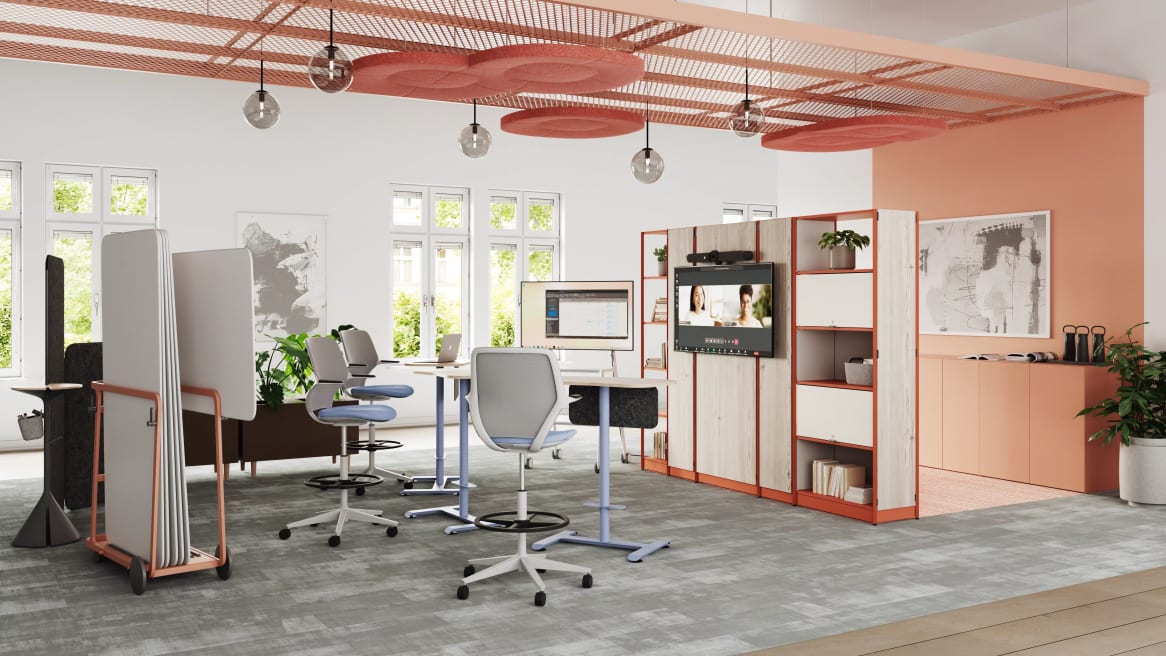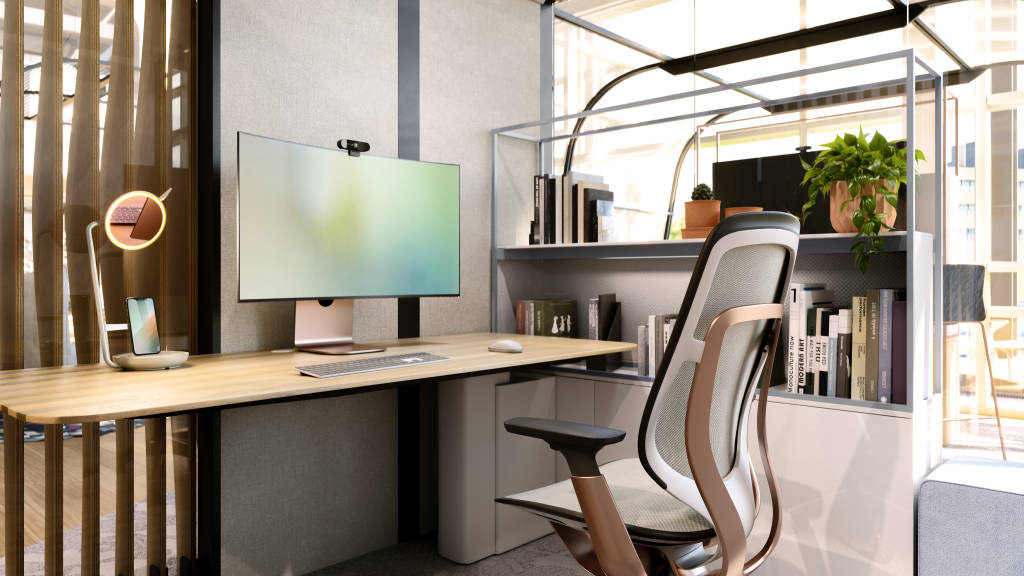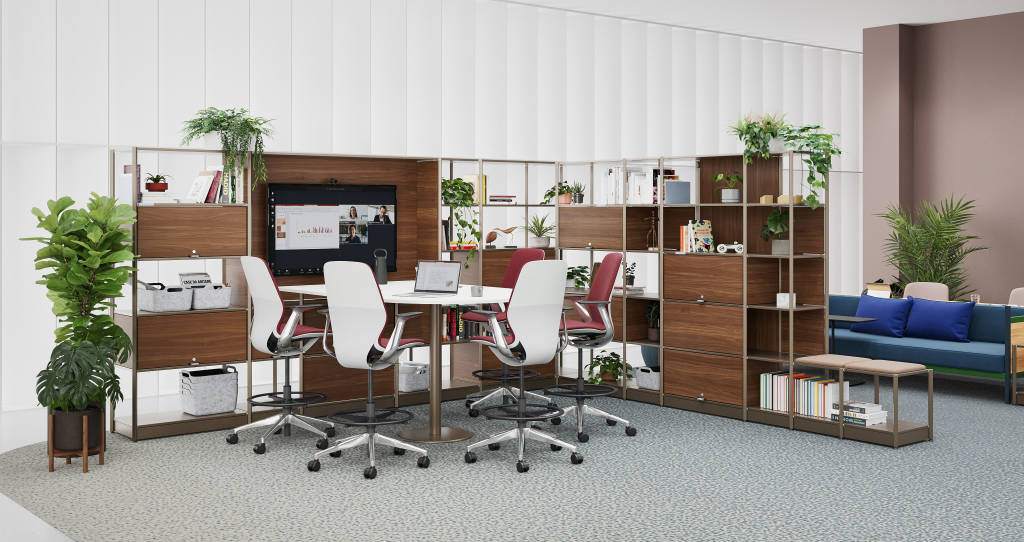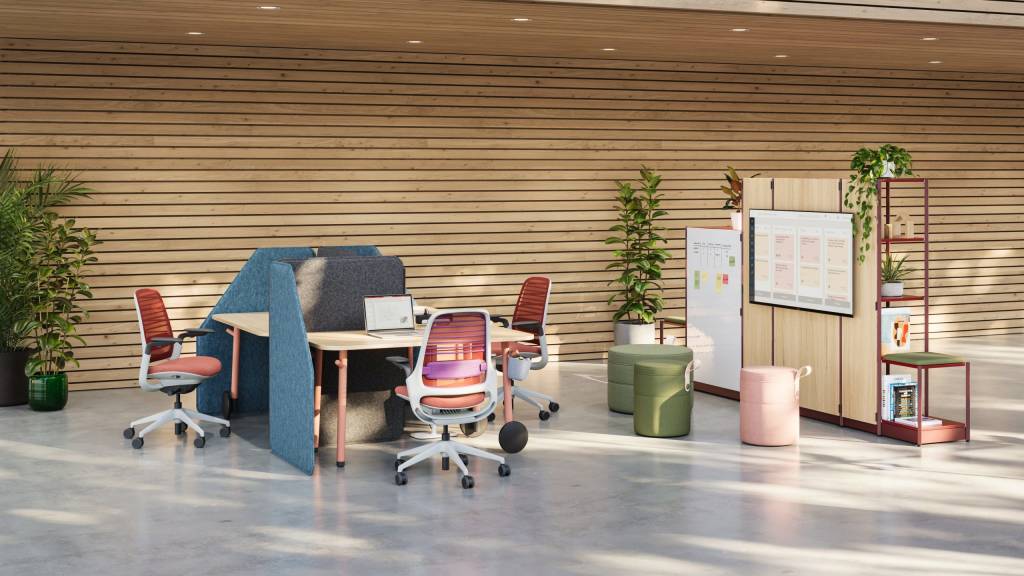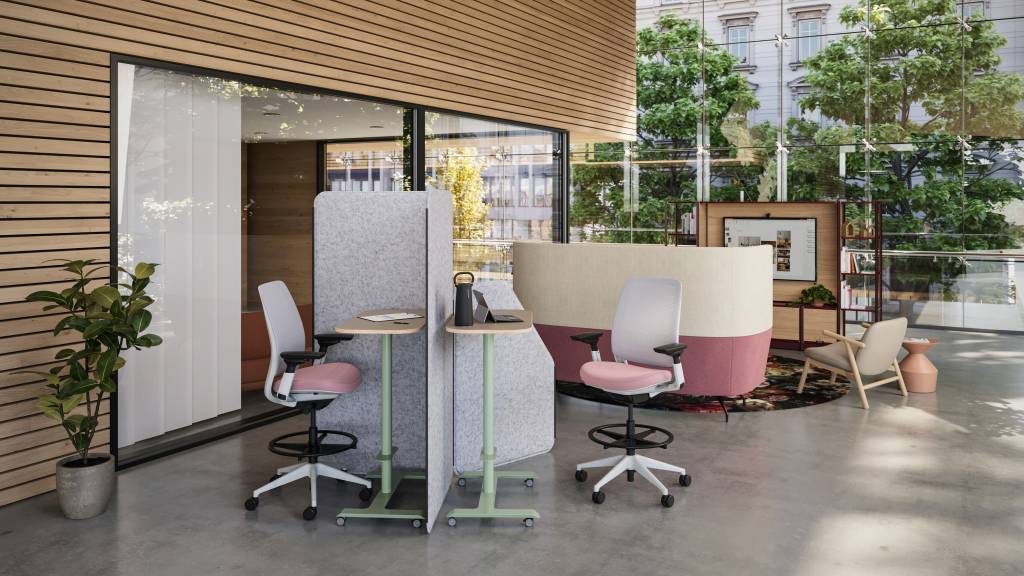Conversations: Designing Hybrid Ecosystems
A product designer’s take on the Steelcase Flex Collection: High-performance solutions designed for the future of hybrid work
Today, people work from the office, from home and on the go — quickly transitioning between hybrid meetings, collaborative sessions and focus work. Workplaces need to easily adapt and flex to keep up with changing work styles. The Steelcase Flex Collection offers the flexibility that teams and individuals want for an optimized hybrid experience. Work Better sat down with Penghao Shan, Senior Industrial Designer at Steelcase, to gain insight into the design process and the evolution of the Flex Collection to fit the future of hybrid work.
WB: What does the design process look like for the Flex Collection?
PS: It’s a complex problem-solving process involving our whole team, always starting with the question we’re trying to answer. In this case the question was: how can we best support hybrid work? Then we define the features that we need, like technology and flexibility.
We then build many prototypes to test our hypothesized solutions. Our team’s superpower at the Learning + Innovation Center in Munich is our culture of experimentation and the way we work together to deeply understand how people, space and technology interact. We constantly innovate and build models, inviting people to test the product so we can gather feedback. We continue making adjustments based on that feedback, market needs and research, so that the final prototype is user-friendly and solves people’s workplace challenges.
WB: What was the inspiration behind the newest products in the Collection?
PS: Before the pandemic, rapid technology development and increasing globalization were already in motion. Hybrid work was on the rise and people began using office spaces differently. We noticed that people situated storage products to create enclosed spaces and boundaries, revealing a demand for flexible products that could serve both purposes. So, we designed Steelcase Flex Active Frames to create reconfigurable boundaries within an open space — without building walls.
The onset of the pandemic catalyzed all the patterns we were already observing. People adopted hybrid work to an extent that’s never been seen. Remote and in-person teams and individuals are constantly switching between different work modes. To facilitate the dynamic nature of hybrid work, we created products like the Flex Media Cart, Media Tower, and Flex Mobile Power that bring together flexible technology and boundary elements.
WB: How does the Flex Collection support the future of hybrid work?
PS: The benefit of the whole system is the flexibility it offers to both people and teams. All products work together to create a smarter ecosystem of spaces that support changing needs. One thing we’re seeing more and more is that customers are looking for future-proof solutions. They want products that are adaptable and anticipate their future needs. Flex Active Frames let organizations restructure their space easily to create neighborhoods for teams, without implementing expensive, time-consuming projects that change the architecture. With technology-agnostic solutions like the Flex Media Cart and the Media Tower, customers can update their technology while maintaining timeless furniture pieces.
WB: Where is the Flex Collection headed in the future?
PS: We’ve devised a roadmap of product improvements as we integrate everything we learn from customers and research. We know that hybrid is here to stay, so our next wave of concepts will be completely oriented to what’s next for work.
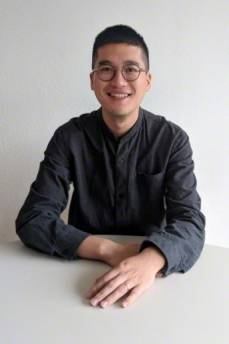
Penghao Shan, Senior Industrial Designer, EMEA, Steelcase
Penghao is a Senior Industrial Designer at EMEA Steelcase, the global leader in the office furniture industry, and is passionate about informing innovative design through learning, reading, and travel.
Penghao has been an Industrial Designer with Steelcase since 2016 and was a part of the research and design team behind the Steelcase Flex Collection. Penghao is based in Munich, after relocating to Germany from China in 2010. Prior to joining Steelcase, Penghao pursued his interest in the start-up world, cofounding a sustainable farming company in China, and working with several Chinese start-ups to advise on product design. In 2017, Penghao was awarded ‘Emerging Chinese Designer’ by AD Magazine.
Penghao holds a Bachelor of Arts from Zhejiang Sci-Tech University, and a Diploma of Industrial Design from the Academy of Art and Design in Stuttgart.


